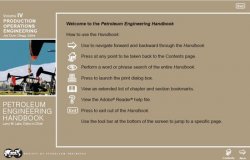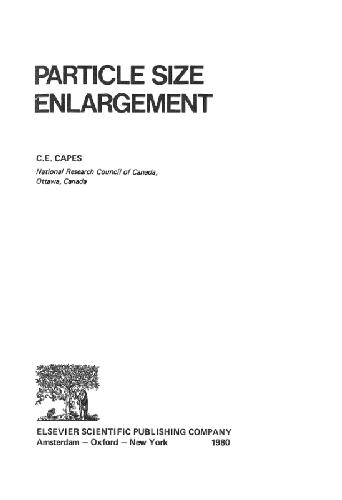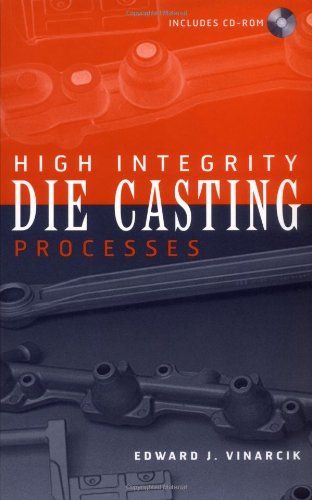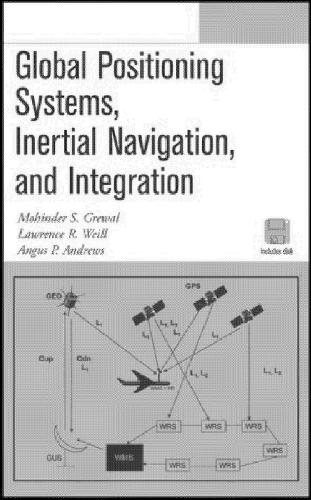Clegg9781555631185, 1555631185
Table of contents :
1.1 The Production System……Page 9
1.2 Reservoir Inflow Performance……Page 10
1.3 Wellbore Flow Performance……Page 31
1.4 Flow Through Chokes……Page 34
1.5 Systems Analysis……Page 36
1.6 Summary……Page 43
Nomenclature……Page 44
SI Metric Conversion Factors……Page 47
2.2 Packers……Page 49
2.3 Methods of Conveyance……Page 62
2.4 Metallurgy……Page 66
2.5 Elastomers……Page 67
2.6 ISO and API Standards……Page 69
2.7 Packer Rating Envelopes……Page 70
2.8 Flow-Control Accessories……Page 71
2.9 Subsurface Safety Systems……Page 76
2.10 Cased-Hole Applications……Page 80
2.11 Multilateral Completions……Page 87
2.12 Operational Well Modes……Page 93
2.13 Impact of Length and Force Changes to the Tubing String……Page 98
2.14 Combination Tubing/Packer Systems……Page 106
Nomenclature……Page 108
Glossary……Page 110
SI Metric Conversion Factors……Page 111
3.1 Introduction……Page 113
3.3 API/ISO Tubing Requirements……Page 114
3.4 Tubing Design Factors……Page 123
3.5 Tubing Inspection……Page 143
3.6 Tubing Handling……Page 144
3.7 Coiled Tubing……Page 149
Nomenclature……Page 153
SI Metric Conversion Factors……Page 156
4.2 Definitions……Page 157
4.4 Perforating Methods……Page 159
4.5 Basic Perforating Design—Variables of Flow Through a Perforation……Page 163
4.6 Temperature Effect……Page 164
4.7 Basic Perforating Design—What Is Necessary for the Optimum Flow Path……Page 165
4.8 Improving Flow Capacity……Page 168
4.9 Cement and Casing Damage……Page 170
4.12 Perforating in Highly Deviated Wells……Page 171
4.13 Perforating Equipment……Page 172
4.15 Pipe Cutoff Methods……Page 177
SI Metric Conversion Factors……Page 181
5.1 Causes of Sand Production……Page 183
5.2 Consequences of Sand Production……Page 184
5.3 Predicting Sand Production……Page 186
5.4 Sand-Control Techniques……Page 188
5.5 Gravel-Pack Design……Page 194
5.6 Slotted Liners and Wire-Wrapped Screens……Page 199
5.7 Gravel-Pack Completion Equipment and Service Tools……Page 206
5.8 Well Preparation for Gravel Packing……Page 211
5.9 Gravel Placement Techniques……Page 220
5.10 Prepacking the Perforations……Page 229
5.11 Openhole Gravel Packing……Page 237
5.12 Sand Control in Horizontal and Long-Throw Highly-Deviated Wells……Page 240
Nomenclature……Page 246
SI Metric Conversion Factors……Page 247
6.2 Quantifying Formation Damage……Page 249
6.3 Determination of Flow Efficiency and Skin……Page 251
6.4 Formation Damage vs. Pseudodamage……Page 254
6.5 Drilling-Induced Formation Damage……Page 255
6.6 Formation Damage Caused by Completion and Workover Fluids……Page 259
6.7 Damage During Perforating and Cementing……Page 260
6.8 Formation Damage Caused by Fines Migration……Page 262
6.9 Formation Damage Caused by Swelling Clays……Page 264
6.10 Formation Damage in Injection Wells……Page 265
6.11 Formation Damage Resulting From Paraffins and Asphaltenes……Page 267
6.12 Formation Damage Resulting From Emulsion and Sludge Formation……Page 270
6.13 Formation Damage Resulting From Condensate Banking……Page 271
6.14 Formation Damage Resulting From Gas Breakout……Page 273
6.17 Bacterial Plugging……Page 274
Nomenclature……Page 275
SI Metric Conversion Factors……Page 282
7.2 Two Basic Acidizing Treatments……Page 283
7.4 Effects of Acidizing: Undamaged Well……Page 284
7.6 Production History Plots……Page 287
7.8 Pressure Buildup Tests……Page 288
7.9 Well Flow Analysis……Page 290
7.11 Identify Extent/Type of Damage……Page 291
7.14 Formation Properties……Page 292
7.15 Formation Matrix Properties……Page 295
7.16 Formation Mineralogy……Page 296
7.17 Methods of Controlling Precipitates……Page 298
7.20 Acid Type and Concentration……Page 300
7.22 Geochemical Models……Page 302
7.24 Mechanical Techniques……Page 303
7.25 Particulates……Page 304
7.26 Viscous Acid……Page 305
7.28 Horizontal Wells……Page 307
7.29 Acid Additives……Page 308
7.31 Safety and Environment Protection……Page 312
7.32 Well Preparation……Page 313
7.33 Quality Control……Page 314
7.34 Injection-Rate Control and Monitoring……Page 315
7.36 On-Site Evaluation of Acid Treatment Effectiveness……Page 316
7.37 Spent Acid Production Control……Page 317
7.38 Produced Fluid Sampling……Page 318
7.39 Evaluation of Acid Treatments……Page 320
7.40 Continuous Improvement……Page 323
Nomenclature……Page 324
SI Metric Conversion Factors……Page 329
8.1 Introduction……Page 331
8.2 Fracture Mechanics……Page 335
8.3 Fracture Propagation Models……Page 341
8.4 Fracturing Fluids and Additives……Page 344
8.5 Propping Agents and Fracture Conductivity……Page 347
8.6 Fracture Treatment Design……Page 352
8.7 Acid Fracturing……Page 356
8.8 Fracturing High-Permeability Formations……Page 360
8.9 Fracture Diagnostics……Page 363
8.10 Post-Fracture Well Behavior……Page 366
Nomenclature……Page 371
SI Metric Conversion Factors……Page 374
9.1 Introduction……Page 375
9.2 Water-Related Production Problems……Page 385
Acknowledgments……Page 412
SI Metric Conversion Factors……Page 417
10.1 Introduction……Page 419
10.2 Reservoir Pressure and Well Productivity……Page 420
10.3 Reservoir Fluids……Page 421
10.5 Types of Artificial Lift……Page 422
10.6 Selection Methods……Page 446
10.7 Sample Run-Life Information……Page 456
10.8 Conclusions……Page 457
Nomenclature……Page 459
SI Metric Conversion Factors……Page 463
11.1 Introduction……Page 465
11.2 The Producing Reservoir……Page 467
11.3 Downhole Sucker-Rod Pumps……Page 473
11.4 Sucker Rods……Page 481
11.5 Miscellaneous Subsurface Equipment……Page 489
11.6 Sucker-Rod Pumping Units……Page 496
11.7 Prime Movers……Page 501
11.8 Miscellaneous Surface Equipment……Page 513
11.9 Design Calculations……Page 515
11.10 Automation and Pumping Control……Page 516
11.11 Troubleshooting Sucker-Rod-Lift Installations……Page 517
Nomenclature……Page 518
SI Metric Conversion Factors……Page 527
12.1 Introduction……Page 529
12.2 Designing a Gas Lift System……Page 531
12.3 Compressor Horsepower……Page 535
12.4 Gas Fundamentals……Page 541
12.5 Gas Lift Equipment……Page 550
12.6 Gas Lift Valve Mechanics……Page 552
12.7 Production-Pressure Factor and Valve Spread……Page 563
12.8 Dynamic Gas Lift Valve Performance……Page 564
12.9 Design of Gas Lift Installations……Page 566
12.10 Installation Design Methods……Page 568
12.11 Intermittent-Flow Gas Lift……Page 601
12.12 Operation of Gas Lift Installations……Page 620
12.13 Gas Lift for Unusual Environments……Page 623
Nomenclature……Page 625
Appendix A—Simplified Mathematical Gas Lift Valve Performance Model……Page 631
Nomenclature……Page 632
13.2 History1,2……Page 633
13.3 ESP System……Page 634
13.4 ESP System Selection and Performance Calculations……Page 695
13.5 Design Example……Page 702
13.6 Example……Page 710
Nomenclature……Page 716
SI Metric Conversion Factors……Page 719
14.1 Introduction……Page 721
14.2 Downhole Pumps……Page 722
14.3 Principles of Operation……Page 726
14.4 Downhole Pump Accessories……Page 742
14.5 Surface Equipment……Page 746
Acknowledgments……Page 763
SI Metric Conversion Factors……Page 764
Introduction……Page 765
15.1 PCP Lift System Equipment……Page 767
15.2 PCP System Design……Page 793
15.3 Specific Application Considerations……Page 816
15.4 PCP System Installation, Automation, Troubleshooting, and Failure Diagnosis……Page 830
15.5 Design Example……Page 838
Nomenclature……Page 842
SI Metric Conversion Factors……Page 845
16.1 Introduction……Page 847
16.2 Basics/Operation……Page 849
16.3 Applications……Page 854
16.4 Design and Models……Page 858
16.5 Basic Foss and Gaul16 Equations (Modified by Mower et al.13 and Lea18)……Page 862
16.6 Equipment Installation and Maintenance……Page 867
16.7 Evaluation and Installation of Downhole Plunger Equipment……Page 872
16.8 Evaluation and Installation of Wellhead and Plunger Surface Equipment……Page 874
16.9 Design Considerations and Plunger Selection……Page 876
16.10 Evaluation of Control Methods……Page 881
16.11 Evaluation and Modification of Production Facilities……Page 890
Nomenclature……Page 891
Acknowledgments……Page 892
SI Metric Conversion Factors……Page 894







Reviews
There are no reviews yet.